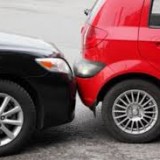“Low Velocity Impact” strategy rejected by the Court.
On June 18, 2014, the BC Supreme Court considered and rejected ICBC’s “low velocity impact” strategy. In Dunne v. Sharma the plaintiff sued for damages as a result of two collisions. She alleged both physical and psychological consequences following these collisions. The defendant argued that any injuries the collisions caused were relatively minor as the collisions were modest. In support of the defendant’s argument accident reconstruction evidence was introduced which discussed the forces of the collision. In rejecting the defendant’s argument Mr. Justice Williams provided the following reasons:
[90] Dealing first with the low velocity and minimal material damage aspect, I note that the defendants have tendered a report prepared by an engineer with expertise in the field of accident reconstruction. The essence of his opinion is that in each of the subject collisions, the velocity change experience by the plaintiff’s vehicle was probably less than about 12 km. per hour. The photographs contained in his report also demonstrate that the damage done to the cars by the collision was quite modest.
[91] I appreciate that to have to been the case and I accept that common sense might generally dictate that a minor collision would not be expected to result in significant injuries. However, there is simply no basis upon which I am able to extrapolate the information concerning the velocity of the collision to a conclusion that the plaintiff’s injuries must therefore necessarily be of a certain type and degree. As has been judicially observed in a multitude of cases, the court cannot conclude that because the impact of the collision was relatively minor, then any resulting injuries must necessarily be minor as well. Justice Thackeray noted in Gordon v. Palmer (1993), 78 B.C.L.R. (2d) 236, 38 A.C.W.S. (3d) 924 (S.C.):
Significant injuries can be caused by the most casual of slips and falls. Conversely, accidents causing extensive property damage may leave those involved unscathed. The presence and extent of injuries are to be determined on the basis of evidence given in court. Objectivity is thus preserved and the public does not have to concern itself with extraneous philosophies that some would impose on the judicial process.
The magnitude of the collision is one factor the court will take into account, but it will be considered in the totality of the evidence. Generally, its effect with respect to determination of resultant injuries will not be great.





